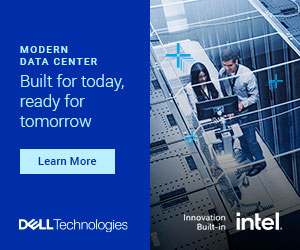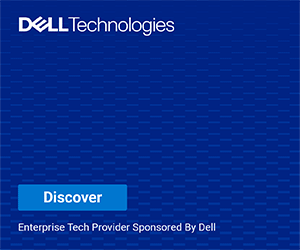When Dell Technologies developed the PowerEdge T550 they focused mainly on enhancing and improving what end user customers used in their ROBO, Edge, SMB, and enterprise datacenter environments. After gleaning mountains of usage data from the previous-generation T440 and T640 models, Dell arrived at a clear consensus. They found that:
• GPU attach rates on the more-capable T640 were rarely populated in full, resulting in under-utilized space
• Specific desirable features in the T640, such as NVMe support, were not present in the T440
• Top bin CPU support was not present in the T440
These observations inspired Dell’s engineering team to refine what the next performance mainstream PowerEdge tower would be. By eliminating the less desirable features and keeping the most valuable ones, the T550 has essentially merged both of its predecessors into a handcrafted, next-generation powerhouse. As a result, Dell believes that partners and shared customers will benefit from transitioning over to the T550 in number of important ways.
The five most valuable benefits to end user customers
More powerful processor - The 3rd Generation Intel® Xeon® Scalable processor family was designed to generate higher productivity and operational efficiency for dense workloads, such as AI, ML/DL and HPC. In addition to full-stack support for the T550, various architectural design refinements have returned significant performance improvements.
Increased memory speed - Memory speeds have risen by 20% over the previous-generation T440 and T640, increasing from 2666 MT/s to 3200 MT/s. Additionally, the number of supported memory slots has jumped from 6 to 8 – a 33% increase in DIMM capacity.
Enterprise level power - The PowerEdge advantage lies within the robust environment offered to enterprise customers. The PowerEdge Raid Controller 11 (PERC11) now provides NVMe HW RAID, granting users the ability to back up data from their most powerful storage devices.
PCIe Gen4 - Support for five slots of PCIe Gen4, the fourth iteration of the PCIe standard, is now included. Compared to PCIe Gen3, the throughput per lane doubles from 8GT/s to 16GT/s, effectively cutting transfer times in half for data traveling from PCIe devices to the CPU.
Increased peripheral support - Decision making for peripheral support came as a direct result from the T440 and T640 merger. Sales data indicated what customers valued most, and the T550 achieved a perfectly balanced blend of storage, PCIe and GPU capability. The number of PCIe slots were also blended, with five slots available for x16 PCIe Gen4, and one slot available for x8 PCIe Gen3. This is a great compromise, as customers will still be receiving more total lanes (88 lanes on T550 vs. 64 lanes on T640).
Learn more about how you can help your customers achieve true digital transformation and grow your server revenues in the process by visiting here





















